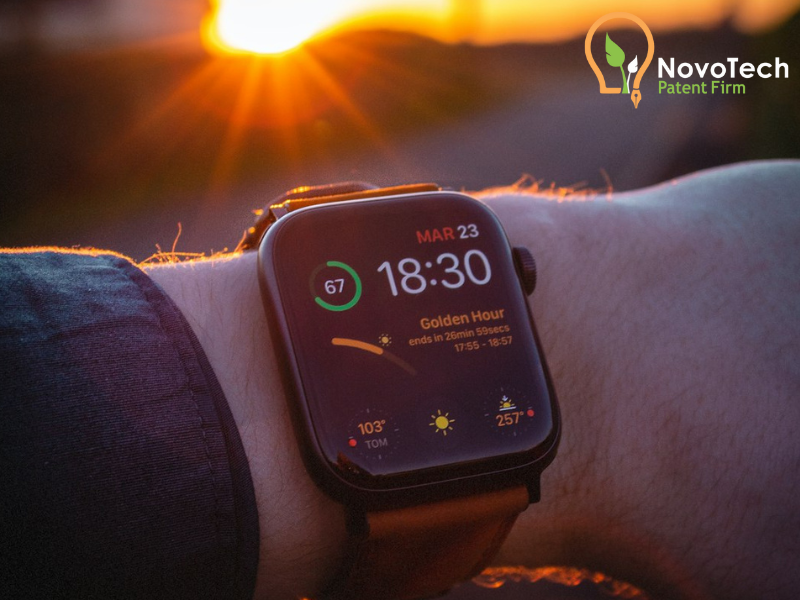
Federal Circuit Backs PTAB in AliveCor v. Apple
Authored by Babak Akhlaghi on March 26, 2025. The Federal Circuit, in the consolidated cases of AliveCor, Inc. v. Apple Inc., Case Nos. 2023-1512, 2023-1513, and 2023-1514 (Fed. Cir. March 7, 2025), affirmed the Patent Trial and Appeal Board’s (PTAB) findings that AliveCor’s three patents were unpatentable due to obviousness. The decision also noted that AliveCor forfeited its argument concerning discovery.
AliveCor, Inc. (“AliveCor”) challenged three PTAB decisions tied to inter partes reviews (IPRs) of U.S. Patent Nos. 9,572,499, 10,595,731, and 10,638,941 (collectively, the “Challenged Patents”), which Apple had petitioned for review. The patents describe monitoring technologies in smartwatches equipped with photoplethysmography (PPG) sensors, which detect blood flow and communicate cardiac data to smartphones for analysis. These systems alert users of irregularities and prompt them to perform electrocardiograms (ECGs) for further examination.
Key Issues in the Appeal
AliveCor’s appeal focused on two core elements of the claims:
- Machine Learning for Arrhythmia Detection: The patents asserted the application of machine learning algorithms to assess ECG data for arrhythmias. Apple cited Hu 1997 and Li 2012 as prior art references demonstrating methods for ECG analysis using machine learning. Additionally, the references discussed reducing false arrhythmia alarms in critical care settings.
- Confirmation of Detected Arrhythmias: Apple referenced Shmueli 2012 for its description of integrating PPG and ECG data to confirm arrhythmias in heart monitoring systems.
PTAB Supports Apple’s Evidence of Obviousness
The PTAB concluded that Apple provided clear evidence from these references, establishing that a person of ordinary skill in the art would have found it obvious to combine the teachings of Shmueli with Hu 1997 or Li 2012 for implementing machine learning and confirmation functionalities in heart monitoring systems.
Rejection of AliveCor’s Argument on Machine Learning Context
The Board rejected AliveCor argument that Hu 1997 “only shows machine learning in contexts other than arrythmia detection.” In this connection, the Board noted that “although Hu 1997 exemplifies the detection of arrhythmia using ECG data . . . the source of the heart rate parameters (e.g., ECG or SpO2/PPG) would not have deterred a [person of ordinary skill in the art] from applying machine learning to them given the advantages of the approach in enhancing performance and detection accuracy.”
Regarding the machine learning claims of the ’731 patent, the Board concurred with Apple’s assertion that after an ECG is measured, it would have been obvious to confirm arrhythmia detection using a machine learning algorithm based on PPG data, motion sensor data, and/or ECG data. The Board acknowledged that Li 2012’s machine learning algorithm relied on multiple data inputs and noted that none of the challenged claims exclude ECG data (or other data utilized in Li 2012) from being input into the algorithm.
Knowledge of a Person of Ordinary Skill
The Board also noted that combining these references would have been obvious to a person of ordinary skill in the art, given the state of existing technology and its direction toward machine learning applications in biomedical contexts. Id. (stating “those of ordinary skill in the art had . . . both interest and success in adapting machine learning to various biomedical applications.”)
Federal Circuit Analysis
On appeal, the Federal Circuit agreed with the Board. Substantial evidence, including expert testimony, supported the finding that Hu 1997, Li 2012, and Shmueli would motivate a skilled artisan to apply machine learning for arrhythmia detection in the claimed manner.
Rejection of Limitations on Prior Art Reading
It is undisputed that Hu 1997 and Li 2012 each teach the use of machine learning to assess ECG data. The Federal Circuit also rejected AliveCor’s argument that the references should be limited to their specific implementations, citing precedent that references may be read for all their teachings. See In re Mouttet, 686 F.3d 1322, 1331 (Fed. Cir. 2012) (“A reference may be read for all that it teaches, including uses beyond its primary purpose.”). AliveCor’s approach also conflicts with the reality that the skilled artisan is not an automaton, so we must “take account of the inferences and creative steps that a person of ordinary skill in the art would employ.” KSR Int’l Co. v. Teleflex Inc., 550 U.S. 398, 418 (2007).
There was, thus, nothing improper in the Board’s determination that such an artisan would have found it obvious to use machine learning in connection with PPG data, even if this precise use is not expressly disclosed in either Hu 1997 or Li 2012. Additionally, the Court affirmed that the machine learning claims were general and did not require a specific algorithm, and the evidence presented met the legal standard for obviousness.
Confirmation Step Supported by Shmueli
Regarding the confirmation step, the court held that Shmueli provided sufficient disclosure to support the Board’s findings that the step of confirming arrhythmias was obvious. Therefore, the Federal Circuit affirmed the Board’s decisions, concluding that the evidence fully supported its findings under 35 U.S.C. § 103 that the claimed inventions were obvious.
Discovery Allegations Forfeited
AliveCor also argued that Apple failed to meet its discovery obligations by not providing evidence submitted during concurrent International Trade Commission (ITC) proceedings. However, AliveCor had neither raised the issue during the PTAB process nor sought appropriate orders for evidence inclusion. Since these arguments were introduced for the first time on appeal, the Federal Circuit deemed the discovery claims forfeited.
Final Ruling
Ultimately, the Federal Circuit affirmed the PTAB’s decisions, concluding that evidence under 35 U.S.C. § 103 supported the obviousness findings. AliveCor’s discovery-related challenges were dismissed due to procedural failure.
Stay Informed with Expert Insights!
Want more valuable tips on navigating patent law and protecting your intellectual property? Join our free weekly newsletter for the latest updates, expert advice, and exclusive content straight to your inbox. Subscribe today and never miss out on essential information that can make all the difference in your patent journey! Subscribe to our Newsletter